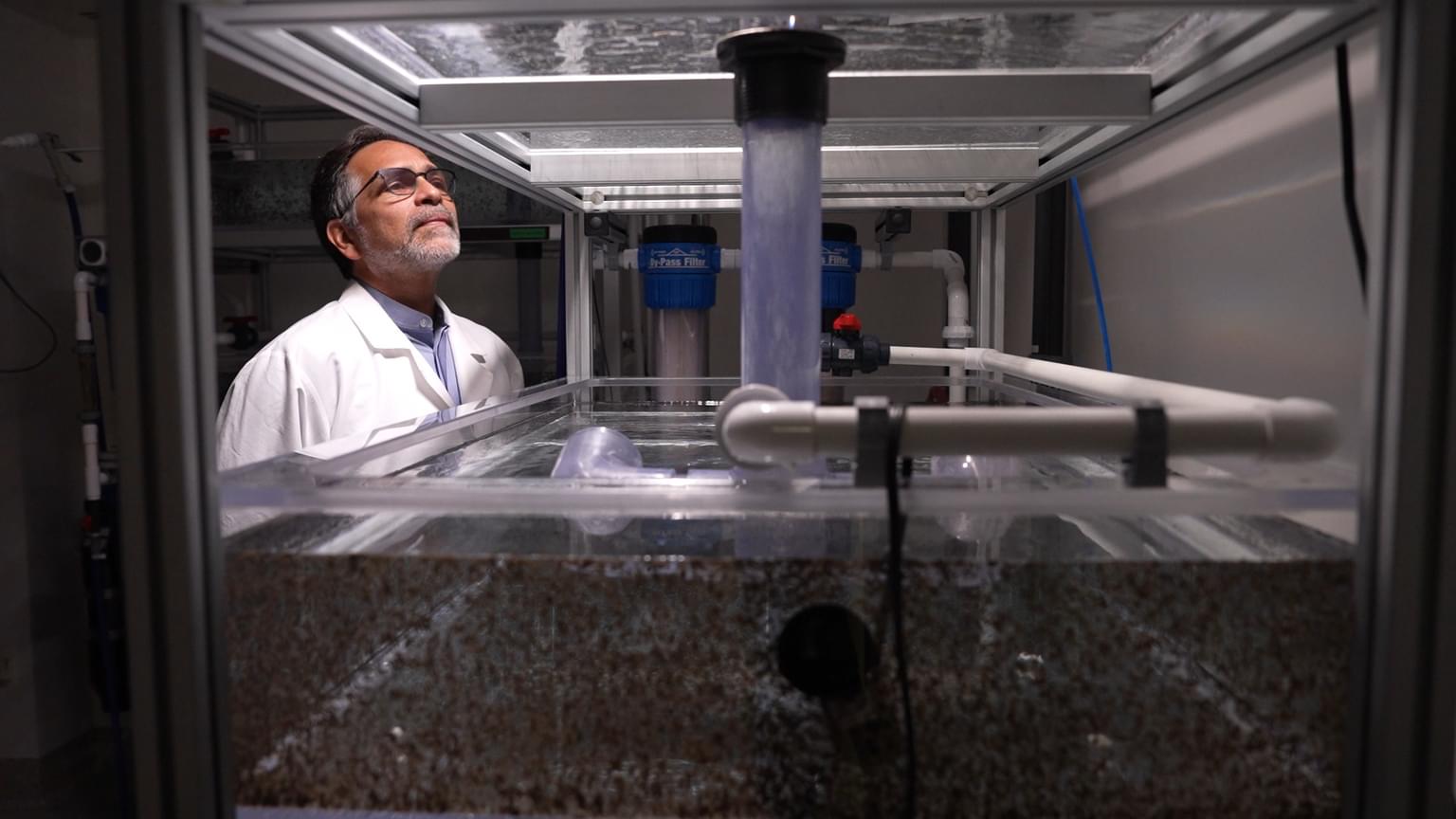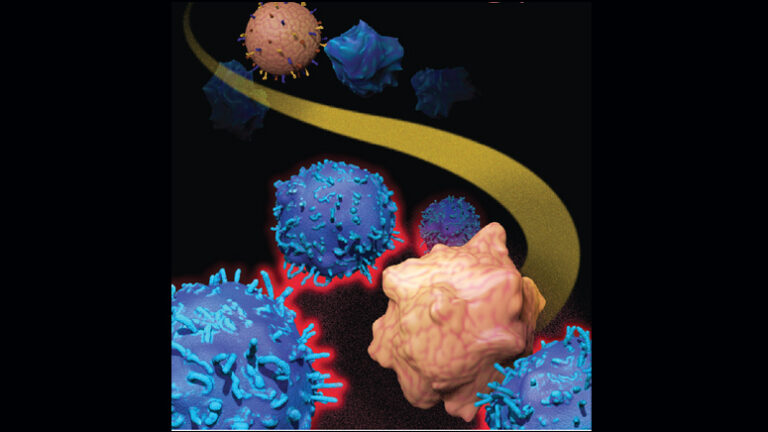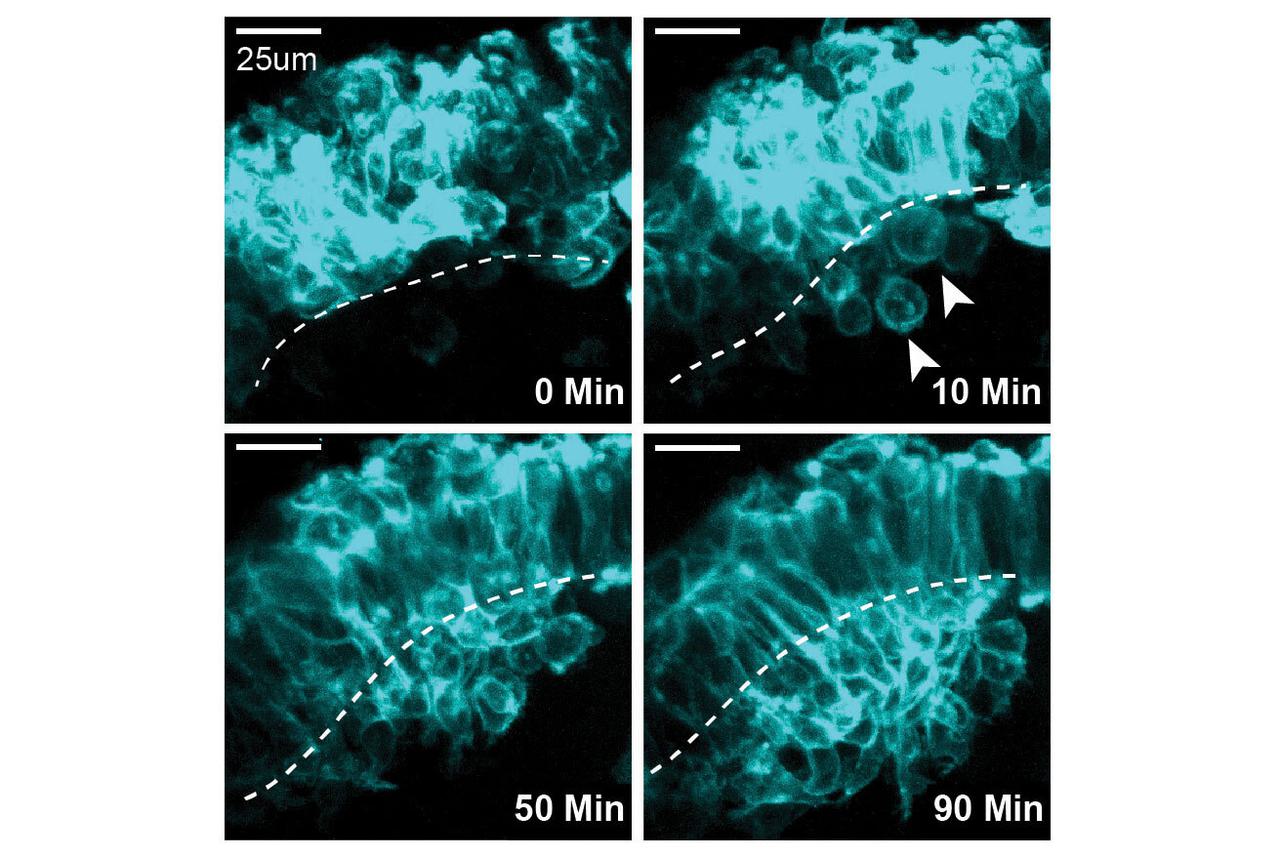Researchers repurpose classic chemotherapy drug to overcome cancer therapy resistance
KANSAS CITY, MO—Drug resistance is a major obstacle in cancer treatment—leading to relapse for many patients. In a new study, published online April 20, 2020, in Nature Cell Biology, researchers from the Stowers Institute for Medical Research, Children’s Mercy Kansas City, and The University of Kansas Cancer Center report on a promising new strategy to overcome drug resistance in leukemia, using targeted doses of the widely-used chemotherapy drug doxorubicin.
The study’s researchers found that low doses of the anthracycline antibiotic doxorubicin inhibit the interaction between two molecular pathways that work closely together to promote tumor growth and resistance to therapy. The targeted approach also clears the way for cancer-targeting immune cells to do their work, an unexpected and novel finding, according to the study authors.
“In low doses, doxorubicin actually stimulated the immune system, in contrast with the typical clinical doses, which were immunosuppressive, killing healthy immune cells indiscriminately,” says John M. Perry, PhD, a researcher with the Children’s Mercy Research Institute at Children’s Mercy. He completed his postdoctoral work at Stowers and is first author of the report.
The findings are the result of a decade-spanning collaborative effort among researchers at the Stowers Institute, Children’s Mercy, The University of Kansas Cancer Center and other institutions, evolving from their studies on how normal, healthy stem cells self-renew.
Early in their studies, Stowers Institute Investigator Linheng Li, PhD, and Research Specialist Xi He, MD, showed that the protein kinase Akt could enhance Wnt signaling via phosphorylating beta-catenin, thus promoting tumorigenesis in the gut. Perry further investigated the Wnt/beta-catenin and PI3K/Akt pathways in the hematopoietic (blood-forming) system. Using a mouse model with genetic modifications of the Wnt/beta-catenin and PI3K/Akt pathways, Perry found that the two pathways cooperate to drive stem cell renewal, thus resulting in excessive blood-forming stem cell production. But instead of just expanding the stem cells, the permanent activation of the pathways caused the mice also to develop leukemia. Intrigued, the researchers shifted their focus to inhibiting interaction between those same pathways to target leukemia stem cells.
Many drugs that directly target the Wnt/beta-catenin or PI3K/Akt pathways eventually fail because cancer cells evolve resistance to them, and broadly-acting chemotherapeutic drugs can have harsh side effects and systemic toxicity. The researchers collaborated with Scott Weir, PhD, and Anuradha Roy, PhD, at The University of Kansas (KU) Cancer Center, to search for an alternative among the compounds cataloged in the center’s small molecule library.
“Our idea was to find a drug with the goal of blocking the interaction between Wnt/beta-catenin and PI3K/Akt and reduce the toxicity,” says Li, who serves as liaison between Stowers and the KU Cancer Center and co-leads the center’s cancer biology research program.
The team conducted high-throughput drug screening, which showed that doxorubicin did the best job of inhibiting the interaction between the two pathways. They found that the drug’s inhibitory powers worked at low doses, which offers an advantage over administering it at high doses as a chemotherapeutic drug where it can cause lasting heart damage in some patients.
Samples collected from pediatric leukemia patients at Children’s Mercy were also central to the study. A diagnostic sample was collected from each patient before and after chemotherapy treatment to compare therapy-resistant leukemia stem cells to therapy-sensitive leukemia stem cells. Then the samples were transplanted into mice to test whether they developed leukemia and whether low-dose doxorubicin treatment improved their survival and reduced leukemia development.
“We found that mice receiving patient sample transplants with therapy-resistant leukemia stem cells rapidly developed leukemia, but low-dose doxorubicin treatment improved survival by reducing leukemia stem cells,” Perry says. “However, mice receiving patient sample transplants that did not contain therapy-resistant leukemia stem cells did not respond to low-dose doxorubicin treatment. These results showed that chemoresistant leukemia stem cells from patients could be functionally reduced with low-dose doxorubicin treatment, at least in an in vivo animal model assay.”
After successful testing in mouse models, the researchers worked with Tara Lin, MD, at the KU Cancer Center to conduct a small-scale clinical trial to test low-dose anthracycline treatment on adults with treatment-resistant acute myeloid leukemia (AML). The trial used daunorubicin, a chemotherapy drug in the same class as doxorubicin, which is widely used in treating AML. Bone marrow was collected immediately prior to treatment and again post-treatment. Half of the study participants responded to the treatment and had reduced numbers of leukemia stem cells exhibiting the Akt-activated beta-catenin biomarker.
In addition to these encouraging results, the overarching study also revealed surprising insights into immune escape—a hallmark of cancer development in which cancerous cells evade the immune system and proliferate. Mechanistically, they found that leukemia stem cells express multiple proteins known as immune checkpoints, which turn off immune responses that might otherwise recognize and eliminate leukemia stem cells. Another team member, Fang Tao, PhD, uncovered that beta-catenin binds to multiple immune checkpoint gene loci. Low-dose doxorubicin treatment reduced expression of these immune checkpoints, including PD-L1, TIM3, and CD24, which exposed otherwise resistant leukemia stem cells to immune-mediated cell killing.
Going forward, at Children’s Mercy, Perry is conducting further research to understand ways to screen other drugs that synergize with low-dose doxorubicin to kill resistant cells while reactivating anticancer immunity in pediatric patients. His team has recently launched a clinical trial on low-dose doxorubicin in pediatric patients. At Stowers, the Li Lab is investigating similar strategies for overcoming cancer therapy resistance in solid tumor cancers including breast cancer, glioblastoma, and colon cancer.
“The research holds promise as a more effective strategy to overcome cancer therapy resistance and immune escape that can be used in combination with other cancer therapies including chemotherapy, radiation, and immunotherapy for patients with leukemia and other types of cancer,” Li says.
Low-dose doxorubicin also avoids the harsh side effects of high-dose doxorubicin, potentially offering patients a better quality of life. In high doses, doxorubicin damages the heart muscle. Even when patients survive long-term, highly toxic anticancer treatments often cause long-term health problems and reduced life expectancy.
“Pediatric patients should live another half-century or more, so we need to do a better job of ensuring not only long-term survival, but healthy and productive lives,” Perry says.
In addition to Li and Perry, study coauthors from the Stowers Institute for Medical Research include Fang Tao, PhD, Xi C. He, MD, Shiyuan Chen, Linhao Ruan, PhD, Xiazhen Yu, MD, PhD, Debra Dukes, Andrea Moran, Meng Zhao, PhD, Aparna Venkatraman, PhD, Pengxu Qian, PhD, Zhenrui Li, PhD, Mark Hembree, and Ariel Paulsen. Lead collaborators at other institutions include Scott Weir, PhD, Andrew Godwin, PhD, and Tara Lin, MD, from The University of Kansas Cancer Center; Anuradha Roy, PhD, and Melinda Broward from the University of Kansas, Lawrence; Erin Guest, MD, Keith August, MD, and Alan Gamis, MD, from Children’s Mercy; Dong Xu, PhD, from the University of Missouri; Sitta Sittampalam, PhD, from the National Institutes of Health; and Xiuling Lu, PhD, from the University of Connecticut.
This work was supported by funding from the Stowers Institute for Medical Research, Children’s Mercy, Braden’s Hope for Childhood Cancer, Leukemia and Lymphoma Society, Kansas Bioscience Authority, Hall Family Foundation, University of Connecticut Academic Plan Grant, American Chemical Society (award ACS PRF 5247200 to RMK), National Science Foundation (CAREER award DMR 0748398 to RMK), and National Institutes of Health including the National Cancer Institute (Cancer Center Support Grant P30CA168524 to KU Cancer Center) and the National Institute of General Medical Science (award R01GM100701 to DX). The content is solely the responsibility of the authors and does not necessarily represent the official views of the National Institutes of Health.
Lay Summary of Findings
In a new study, published online April 20, 2020, in Nature Cell Biology, researchers report on a promising new strategy to overcome drug resistance in leukemia, using targeted doses of the widely-used chemotherapy drug doxorubicin. The findings are the result of a decade-spanning collaborative effort among researchers at the Stowers Institute for Medical Research, Children’s Mercy Kansas City, The University of Kansas Cancer Center, and other institutions, evolving from studies in Linheng Li’s laboratory at Stowers where first author John Perry, PhD, completed his postdoctoral fellowship.
The researchers found that low doses of doxorubicin, a standard treatment for several types of cancer including leukemia, inhibits two molecular pathways, Wnt/beta-catenin and PI3K/Akt, which work closely together to promote tumor growth and resistance to therapy. The team also found that low-dose but not high-dose doxorubicin activated anticancer immunity against therapy-resistant leukemia stem cells, an unexpected and novel discovery. The research holds promise as a more effective strategy to overcome cancer therapy resistance and stimulate immunity that can be used in combination with other cancer therapies including chemotherapy, radiation, and immunotherapy for patients with leukemia and other types of cancer. Low-dose doxorubicin also avoids the harsh side effects of high-dose doxorubicin, potentially offering patients a better quality of life.
About the Stowers Institute for Medical Research
The Stowers Institute for Medical Research is a non-profit, basic biomedical research organization dedicated to improving human health by studying the fundamental processes of life. Jim Stowers, founder of American Century Investments, and his wife, Virginia, opened the Institute in 2000. Currently, the Institute is home to about 500 researchers and support personnel, over 20 independent research programs, and more than a dozen technology development and core facilities. Learn more about the Institute at www.stowers.org and about its graduate program at www.stowers.org/gradschool.




